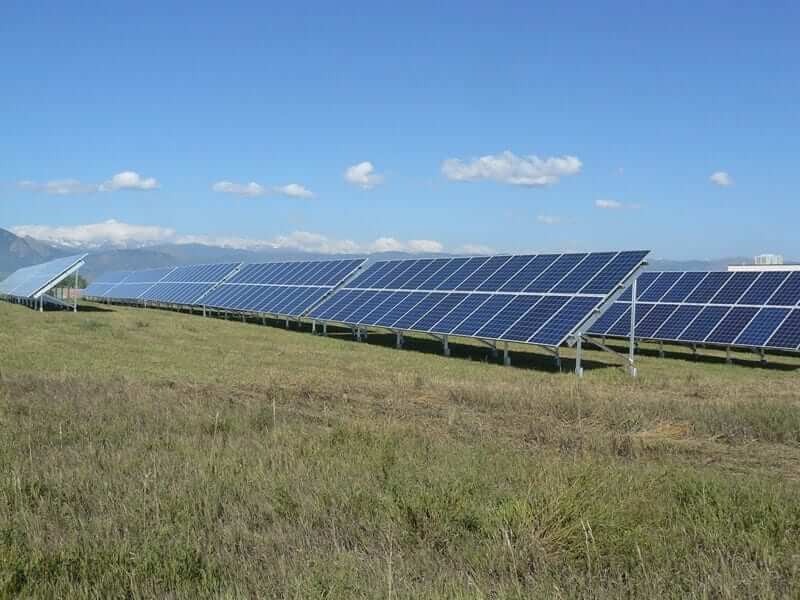How Long Do Solar Panels Really Last?
Not all solar panels are created equal. Good, we got that out of the way early.
Different manufacturers, materials, technologies, and applications can mean sizable changes in the amount of energy your solar power system can produce over its usable lifetime. Generally speaking, solar panels will last on average, about 25 years though there are a variety of factors that contribute to their overall power production and degradation. If you are considering investing in a solar power system for your home or business, it is essential that you have a clear estimate of the amount of energy you’ll be able to generate year after year. Depending on your situation, it may make more financial sense to invest in a high-efficiency solution that delivers more energy savings over the long-term.
HOW LONG WILL SOLAR PANELS LAST?
Solar panels, like most other modern devices, slowly become less efficient over time. For each year a solar panel operates, it produces electricity incrementally less efficiently than the year before. This estimated annual loss of efficiency is referred to as the degradation rate. So, this begs the question, how long do solar panels last if they are slowly becoming less efficient?
A 2012 study by the National Renewable Energy Lab (NREL) reviewed solar panel degradation studies spanning forty years and found the average panel degradation rate was between 0.5% and 0.8%. Therefore, solar panels with a 0.8% degradation rate can be expected to operate at 92% efficiency after a decade, and still offer 80% efficiency or more 25 years out. For most conventional solar panels, a 25-year performance warranty with a minimum guaranteed efficiency of 80% after that period is standard among manufacturers.
And 80% isn’t bad! Your solar panels will most likely still be producing significant energy after 25 years, and the system will have long paid for itself through energy savings. This means essentially free energy for the remainder of your system’s life or so long as you live in the home. If the energy output isn’t enough to meet future demands, many home and business owners will opt for an array expansion—roof space permitting, of course.
But an 80% degradation rate is simply the industry standard. Higher-efficiency solar panels with significantly lower degradation rates exist and are readily available on the market today. SunPower’s premium solar panels, for instance, will provide 60 percent more power than a conventional panel over a 25-year period, with degradation rates as low as 0.3% depending on individual products. In reality, SunPower’s patented Maxeon® solar cell technology means an expected solar panel lifespan of well over 40 years.

It all depends on the materials, the manufacturer, etc. Monocrystalline or polycrystalline solar panels are generally more resilient and have slower degradation rates. Warranties for these types of panels range from 20 to 25 years.
Thin-film modules, such as amorphous silicon or cadmium telluride, have higher average degradation rates, which corresponds with much shorter warranty periods.
WHAT CAUSES SOLAR PANELS TO DEGRADE?
Just like most of our other electronic devices, the wear and tear of time slowly lower the operating efficiency of solar panels. However, it is important to note that the panels themselves are likely the most resilient part of the whole solar power system. The inverters and batteries in the system actually have a higher probability of needing replacement before the solar panels. The main threat contributing to solar panel degradation is the physical damage that comes from being outside in the elements.
The extremes of heat and cold can create brittleness in some solar panels, creating a potential for moisture to enter the module. Also, as temperature causes the solar cells to expand and contract, it can weaken internal cell components. The wind is normally not an issue, but with high winds and loose racking, the panels can be subject to persistent vibrations. Over time that vibration can degrade the bonding between internal parts, which lowers the efficiency of the panel.
Another common threat is from trees and blowing debris. Materials that can brush against or sweep across the panels have the potential to scratch surfaces, which opens the door for moisture. Proper location and installation of the array can help avoid those consequences.
HOW DO SOLAR WARRANTIES WORK?
As mentioned above, a typical performance warranty for solar panels is 20 to 25 years. The guaranteed performance after this period is usually 80% efficient through these warranties and guarantees vary from manufacturer to manufacturer. For example, the SunPower® Complete Confidence Warranty guarantees that your panels won’t lose more than 8% of their original direct current (DC) output in 25 years.
Separate from the performance warranty, it is also standard to have a workmanship or equipment warranty. This warranty covers any manufacturing defects that arise in the equipment. These warranties typically range anywhere from 10 to 20 years (or 25 years if you’re SunPower).
The inverters in a solar power system will likely need replacement before the solar panels. A grid-tied inverter usually carries a longer warranty, around ten years. Off-grid inverters will be shorter, around five years. Sometimes there is an opportunity to purchase a warranty extension, which can double the warranty length. This is often a good opportunity, as the likelihood of replacement for an inverter in 20 years of operation is high.
Like the inverter, if the solar power system has a battery backup, then the batteries will more than likely need replacing before the panels. Battery warranties run anywhere from 3 to 15 years, though the type and maintenance of the batteries can play a big role in how long they last. More robust and rugged solutions like the Sun Xtender® deep cycle AGM batteries or the ultra-safe Blue Ion 2.0 are precision engineered to be maintenance-free.
![]()
HOW CAN YOU EXTEND THE LIFE OF YOUR PANELS?
Once installed, the best thing you can do for your solar power system is to have it inspected regularly by the installer or a maintenance provider. Their inspections are to make sure all the components are staying in place and secure. Loose wires and racking, for example, put the system at the highest risk for physical damage from outside elements.
Keeping the panels clear of debris also helps preserve their functionality. Landscaping trees so they do not threaten your panels is also important. Not only can falling leaves and branches scratch the panels, but if a portion of the array becomes shaded, it can create hot spots that will eventually affect production.
SOLAR PANEL AFTERLIFE – CAN SOLAR PANELS BE RECYCLED?
The lifespan of solar panels can be well over 20-30 years, but what happens to solar panels at the end of their useful life? The majority of solar panels are still relatively new, so the industry of recycling panels is still in its nascent stages. Eventually, as panels from our current solar boom come offline, the industry will scale up to meet the demand. A study by the International Renewable Agency (IRENA) estimated that $15 billion could be recovered by recycling solar models by 2050!
Many parts of solar panels, such as glass, metal, and wiring, already fit into existing recycling channels.
There are also rare elements in some panels that would be ideal for recovery and reuse instead of continuing to mine the limited supplies. The recycling process is also crucial to ensure the proper disposal of environmentally harmful heavy metals, like cadmium and lead, that can be present in solar panels.
Since solar panels bring together a variety of materials in one product, it does require a more complex recycling process. Solar manufacturers are starting to recognize the importance of designing panels not only for their active life but also for what comes after. For example, SunPower has created the first solar panels that are Cradle to Cradle certified, meaning that all of the material sourcing is safe for humans and the environment and can all be recycled at the end of the product life.

